|
|
|
|
|
|
|
The majority of plants,
insects, snails, and birds inhabiting these islands before man
arrived are found nowhere else in the world. In this section,
we will survey some of the native animals that were present
in the ahupua'a of Nawiliwili Bay before human arrival. |
|
|
|
Native Animals:
Birds relies on images from the US Fish and Wildlife
National Wildlife Refuge web site and charts and information
from the Atlas of Hawa'i 3rd Edition |
|
|
|
|
|
|
|
| Flying animals
like birds, bats and large insects were the only successful
land animals to reach the Hawaiian Islands. They were
also responsible for bringing the majority of plants.
Even for ocean creatures, the isolation of Hawai'i is
a challenge. While islands in the western Pacific have
more than 2,000 species of reef and shore fishes, Hawai'i
has 550. The land animals that were able to overcome the
great isolation of these islands found an environment
free of competitors. The descendants of these original
ancestors were able to spread out into a variety of habitats,
becoming endemic species in the process. (Atlas of
Hawai'i) |
|
|
|
|
When humans first arrived in Hawai'i,
there were more than 140 species of native
birds. All 80 species of landbirds, 4 species of
seabirds, and 29 species of waterbirds were endemic (found nowhere
else in the world). Today, over half of these birds are extinct.
Thirty of the remaining 66 native bird species are endangered
- threatened with extinction. (Atlas of Hawai'i) |
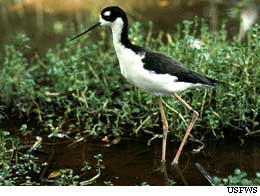 |
|
|
Ae'o - the Hawaiian stilt
|
|
|
|
|
|
|
|
 |
|
As a muliwai,
or major estuary (semi enclosed area where fresh river water
mixes with salt water), Nawiliwili Bay was a haven for native
birds. To the left, the National Wildlife Refuge at Hule'ia
continues a safe habitat for the remaining endangered waterbirds.
Pictured above and below are some of these endangered waterbirds. |
|
|
|
|
|
|
|
|
|
|
|
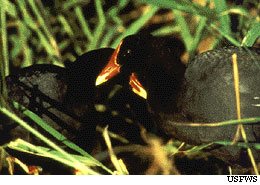 |
|
 |
|
|
Alae'ula - moorhen
|
|
'Alaeke'oke'o - coot
|
|
|
|
|
|
|
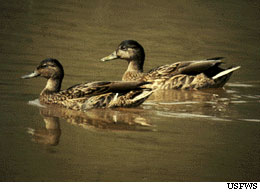 |
|
|
|
|
Koloa maoli - Hawaiian Duck |
|
|
|
|
|
|
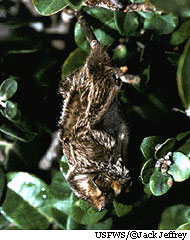 |
|
Ope'ape'a - Hawaiian Hoary Bat
Ope'ape'a lives in the hau bush surrounding the
wetlands. Bats are the only land mammals to make the
journey to the islands unassisted. Like the pictured waterbirds,
they are endangered. |
|
|
|
Along the
kahakai, or coastal zone, there were large nesting
colonies of native birds. These are some of the shore birds
that Hawaiians would have seen: |
|
|
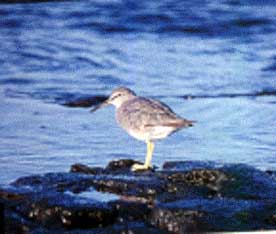 |
|
'Ulili - a song of the same name by George Keahi and
George Naope describes this bird's tatlling cry and behavior
along the shore:
' Ulili e (ahahana `ulili ehehene `ulili ahahana)
`Ulili ho`i (ehehene `ulili ahahana `ulili ehehene)
`Ulili holoholo kahakai e
O ia kai ua lana malie.
The sandpiper
The sandpiper returns
Sandpiper runs along the beach
Where the sea is peaceful and calm
|
|
|
|
|
|
|
|
|
|
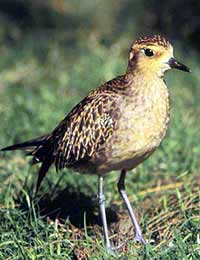 |
|
|
|
|
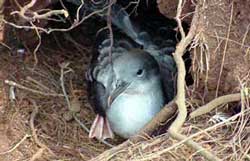 |
|
|
'A'o - Wedge tailed shearwater. The
only seabird endemic to Hawai'i. It is
threatened with endangered status.
|
Kolea - Pacific
Golden Plover
A migratory visitor that comes in August and leaves in May. |
|
|
|
|
|
|
|
|
|
|
|
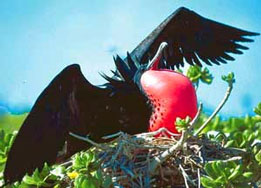 |
'Iwa - Great Frigate Bird
|
|
|
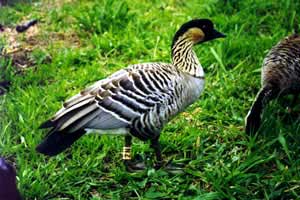 |
|
In the kula, or lowland
mesic and dry forest, there were many varieties of native land
birds, many of which have become extinct since the arrival of
man. These included flightless geese (larger than the nene),
rails, flightless ibis, and others.(Patrick Kirch) To the left
is the Nene, our endemic goose, returning from the brink
of extinction. |
|
|
Nene photo by Dan Petr
|
|
|
|
|
|
|
|
|
|
|
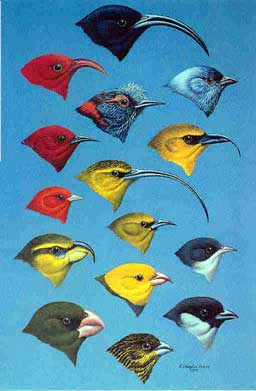 |
|
In the wao akua, or
wet forest, Hawaiian honeycreepers were especially prominent.
They are the world's best example of the evolutionary phenomenon
known as adaptive radiation (changing to survive new habitats).
From a single finch like ancestor who colonized these islands,
over 40 species have evolved. To the left, variation in color
and bill shape in selected honeycreepers is related to their
habitat and diet
(Atlas of Hawai'i) |
|
|
Painting by H. Douglas Pratt
|
|
|
|
|
|
|
Loss of habitat and the introduction
of alien species are key causes for the decline in the
native bird population. |
|
|
|
|
Hawaiian Islands
|
|
Bird Groups
|
Number of Species
|
|
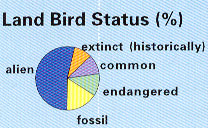 |
|
|
|
|
|
|
|
|
|
|
|
|
|
|
|
Kaua'i
|
|
|
These charts compare the different groups of birds in
Hawai'i at the present time. The odds of native bird
survival are swiftly accelerating downward in this "extinction
capital of the world".(Atlas of Hawai'i)
|
|
|
|
|
|
|
|
|
|
|
|
|
|
|
|
|
|
|
|
|
|
Although birds are the most glamorous
and visible of the endemic species, there are other native animals
just as unique, though perhaps a bit more quiet and unassuming.
Next, we look at the insects
and snails. |
|
|
|
|
|
|
|
|
|
|
|

